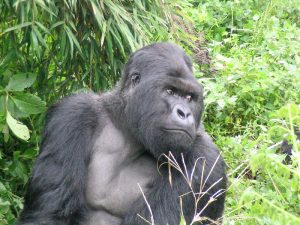How to plan a gorilla trekking trip to Uganda
How to plan a gorilla trekking trip to Uganda. Planning a gorilla trekking trip to Uganda can be an exciting yet daunting task. With its breathtaking landscapes and the opportunity to see the endangered mountain gorillas in their natural habitat, Uganda is a top destination for wildlife enthusiasts. Here’s a comprehensive guide to help you plan your gorilla trekking adventure.
Step-by-Step Guide to Planning a Gorilla Trekking Trip to Uganda
1. Choose the Right Time to Visit
- Best Months: The best time for gorilla trekking in Uganda is during the dry seasons, which are from June to August and December to February. These months offer better hiking conditions and increased chances of seeing the gorillas. The dry seasons – more comfortable for trekking – are mid-December to early February, and June to September. Don’t be completely put off by the rains of November and March-May, as you will have the forests and mountains to yourself, the guides and the gorillas.
- Wet Seasons: While the rainy seasons (March to May and September to November) can make trekking more challenging due to muddy trails, the vegetation is lush, and there are fewer tourists.
2. Obtain a Gorilla Trekking Permit
- Booking: Gorilla permits are essential and can be booked through the Uganda Wildlife Authority (UWA) or authorized tour operators. It is advisable to book at least 3 to 6 months in advance, especially during peak seasons.
- Cost: As of 2024, the cost for a gorilla trekking permit in Uganda is $800 per person per trek, but prices can change, so confirm current rates before planning.
3. Choose Your Trekking Location
- Bwindi Impenetrable National Park: This park is one of the most popular locations for gorilla trekking in Uganda, with several sectors (such as Buhoma, Ruhija, Nkuringo, and Rushaga) offering different trekking experiences and gorilla families to visit.
- Mgahinga Gorilla National Park: This smaller park also offers trekking opportunities, and it’s known for its stunning views and less crowded experience.
4. Plan Your Itinerary
- Duration: A typical gorilla trekking trip lasts 3 to 7 days, depending on whether you want to combine your trek with other activities, such as wildlife safaris or cultural experiences.
- Sample Itinerary:
- Day 1: Arrive in Entebbe, transfer to Bwindi.
- Day 2: Gorilla trekking in Bwindi.
- Day 3: Optional second trek or visit to nearby attractions like Lake Bunyonyi.
- Day 4: Return to Entebbe for departure.
5. Book Accommodation
- Lodging Options: Choose from a range of accommodation options near the trekking locations. Options include:
- Luxury Lodges: Such as Mahogany Springs or Buhoma Lodge.
- Mid-range Options: Like Buhoma Community Rest Camp.
- Budget Accommodations: Available at various guesthouses and campsites.
- Location: It’s best to stay close to the park entrance to minimize travel time on trekking day.
6. Arrange Transportation
- Flights: Book your flight to Entebbe International Airport (EBB), the main gateway to Uganda.
- Ground Transport: Arrange for a private vehicle or join a tour group for transfers from Entebbe to Bwindi or Mgahinga. Hiring a driver-guide with local knowledge can enhance your experience.
7. Prepare for the Trek
- Physical Fitness: Gorilla trekking can be physically demanding. Ensure you are in good health and prepared for hikes that can last several hours.
- Packing Essentials:
- Clothing: Wear breathable, moisture-wicking clothes and sturdy hiking boots. Consider long sleeves and pants for protection against thorny vegetation.
- Rain Gear: A waterproof jacket and gaiters are advisable, as weather conditions can change quickly.
- Other Gear: Bring a daypack, water bottle, snacks, a camera with a zoom lens, and binoculars for bird watching.
8. Understand the Rules and Etiquette
- Follow Guidelines: Always adhere to the guidelines provided during the pre-trek briefing. This includes maintaining a safe distance from the gorillas (at least 7 meters) and minimizing noise.
- Respect Wildlife: Remember that you are in the gorillas’ habitat. Avoid feeding them or making sudden movements.
9. Consider Additional Activities
- Wildlife Safaris: Consider adding visits to other national parks, such as Queen Elizabeth National Park or Murchison Falls National Park, to see Uganda’s diverse wildlife.
- Cultural Experiences: Engage with local communities to learn about Ugandan culture and traditions, such as visiting Batwa pygmies or taking part in local craft workshops.
10. Check Health Precautions
- Vaccinations: Consult your healthcare provider about recommended vaccinations, such as yellow fever and typhoid.
- Travel Insurance: Consider purchasing travel insurance that covers medical emergencies and trip cancellations.
Conclusion
Planning a gorilla trekking trip to Uganda involves careful consideration of permits, logistics, and personal readiness for the adventure ahead. By following these steps, you can ensure a memorable and enriching experience while contributing to the conservation of these magnificent creatures. Enjoy the thrill of seeing mountain gorillas in the wild and the stunning beauty of Uganda’s landscapes!
This guide provides a comprehensive overview of how to plan your gorilla trekking trip to Uganda, ensuring you have all the necessary information for an unforgettable experience.




